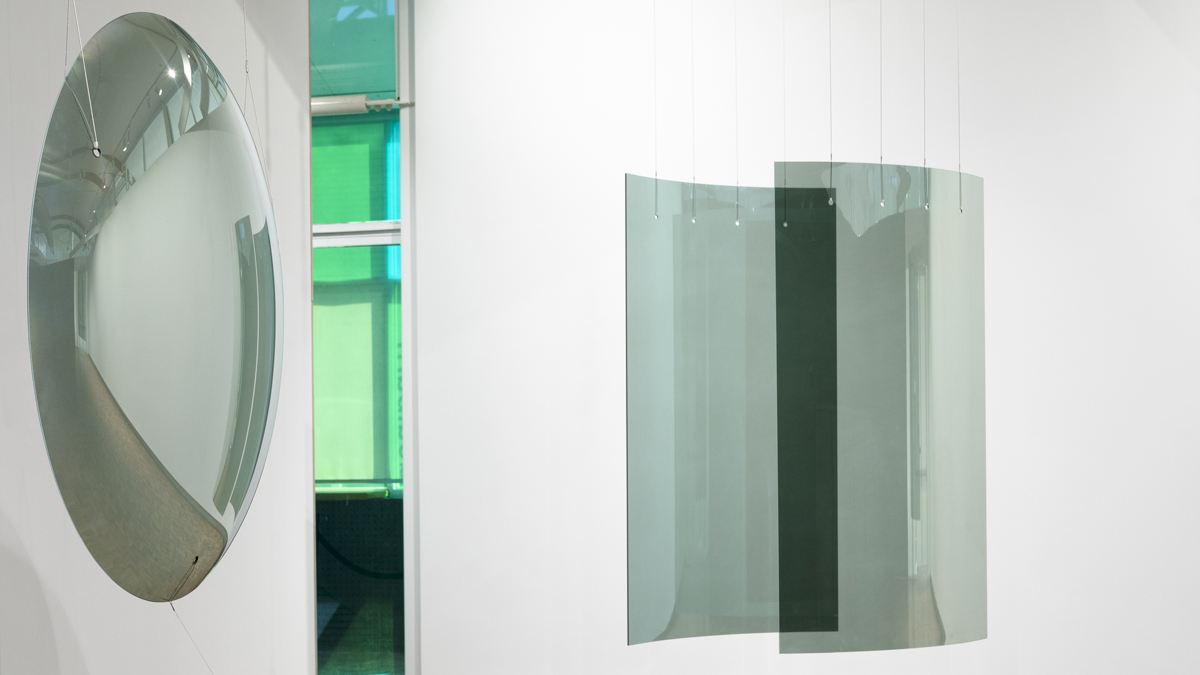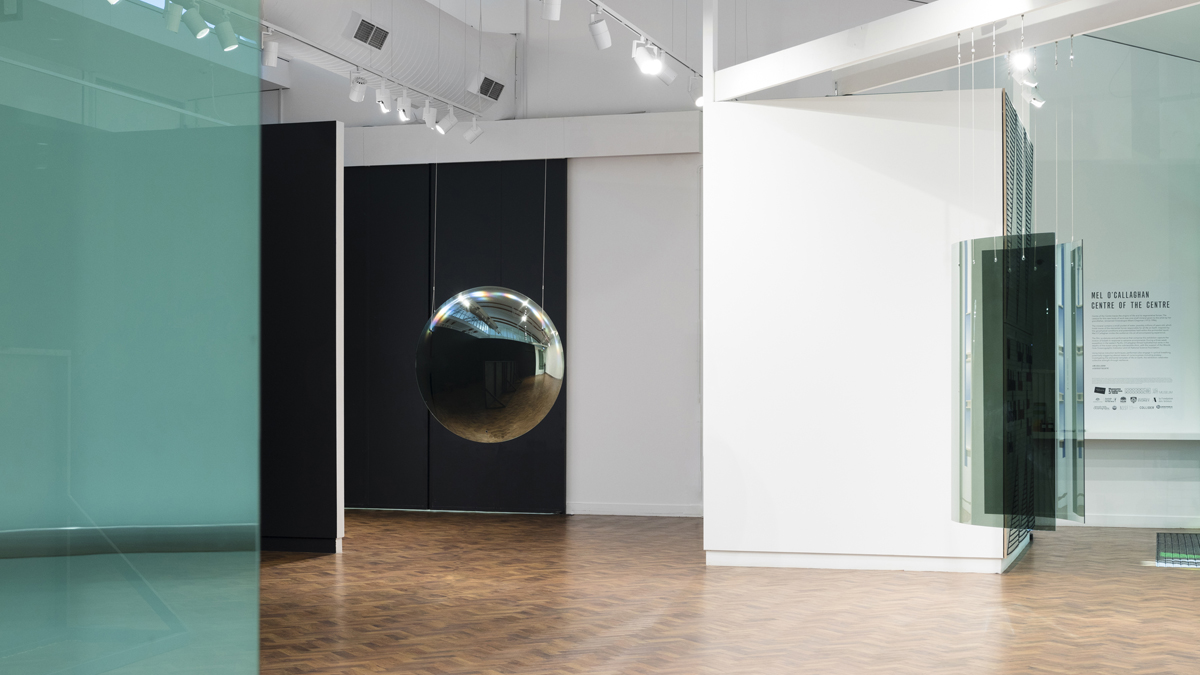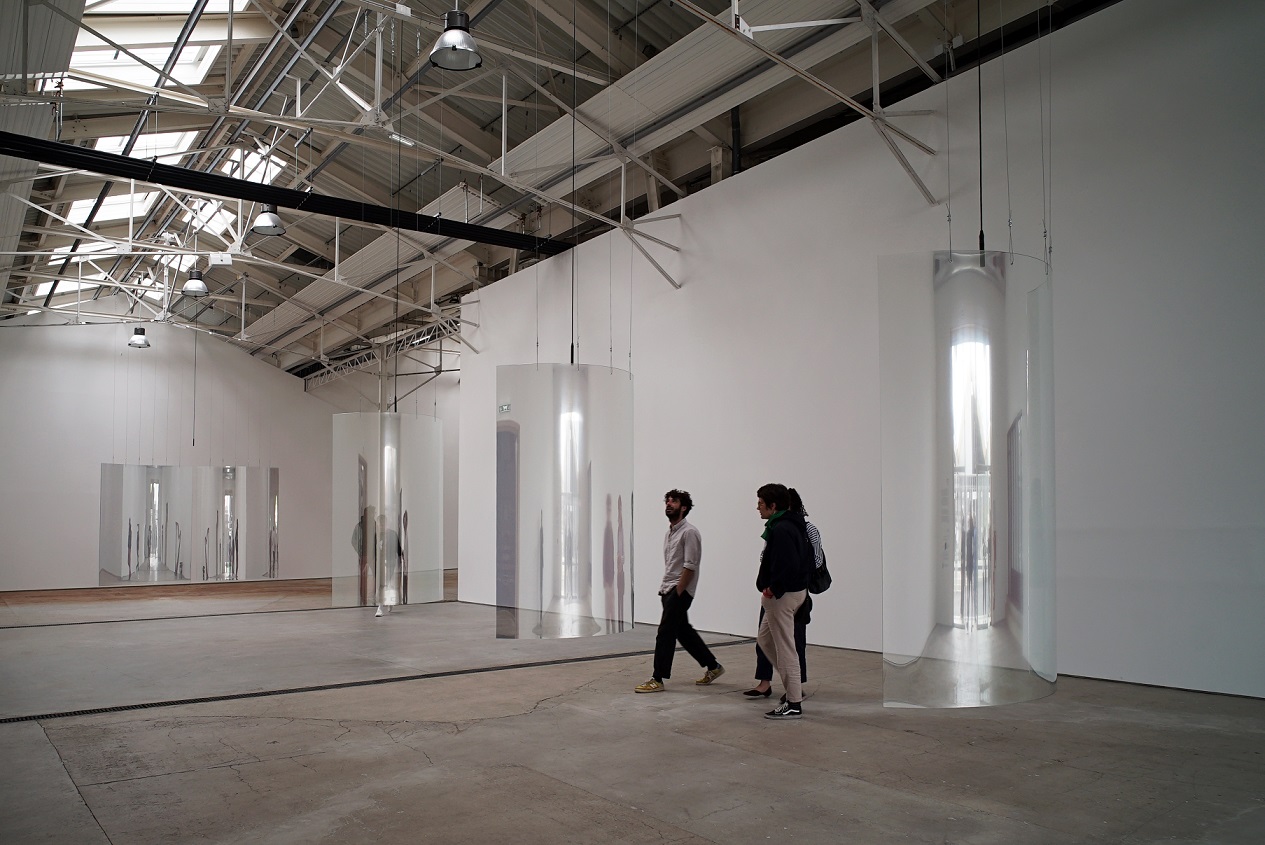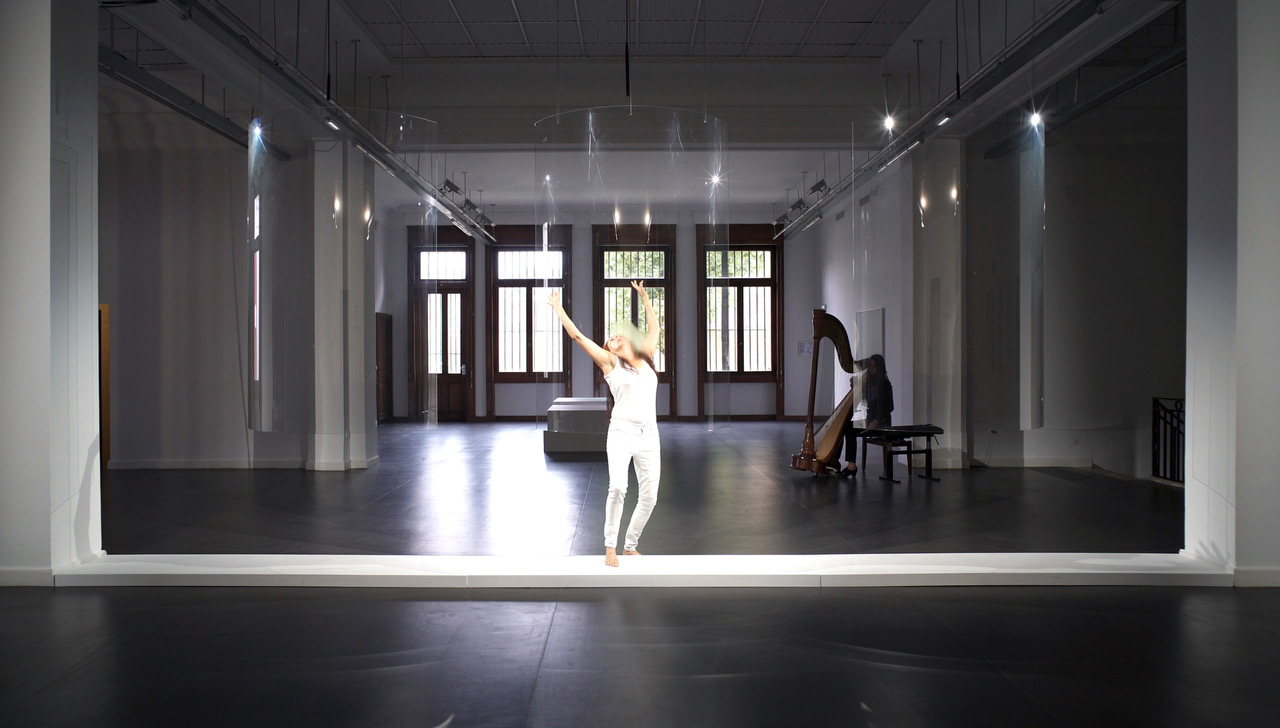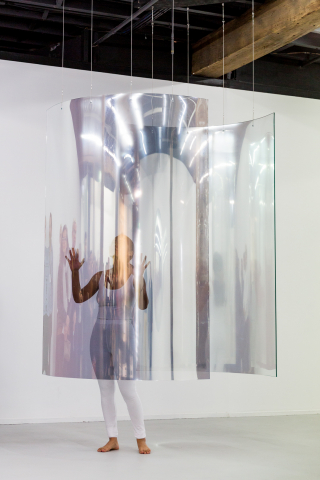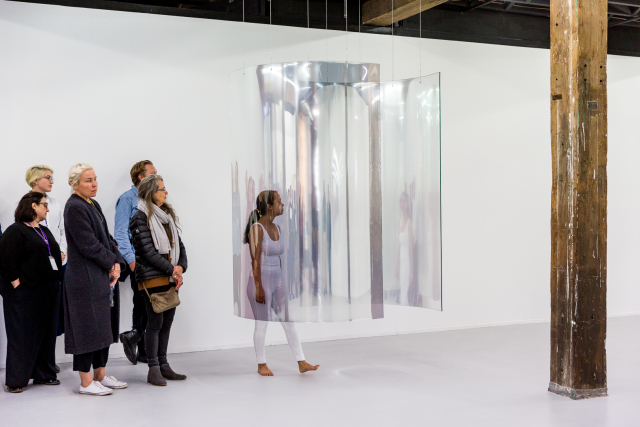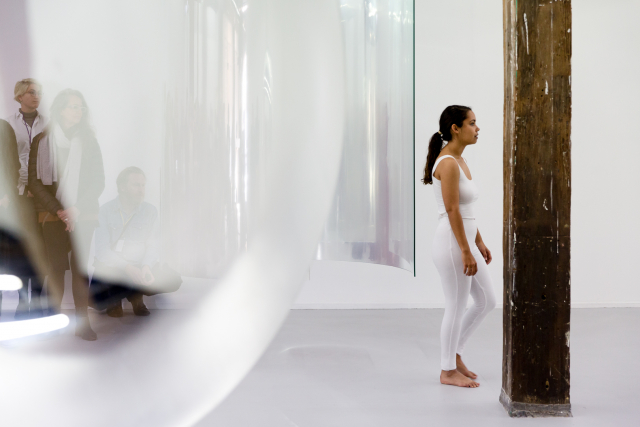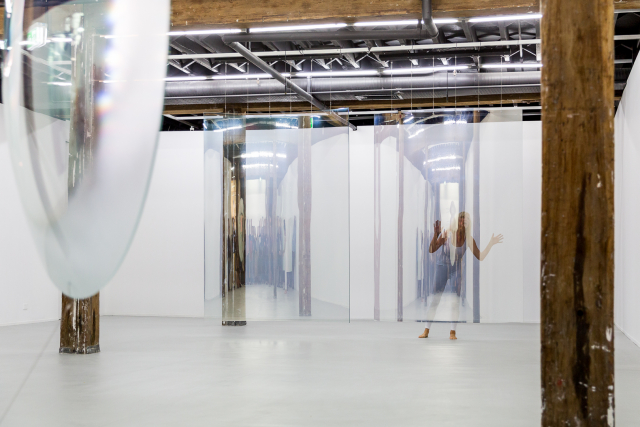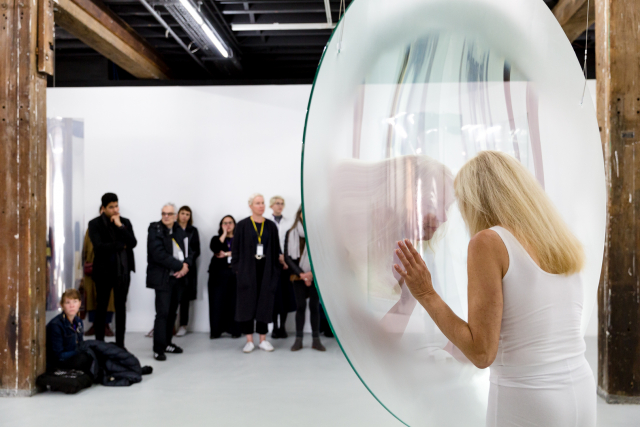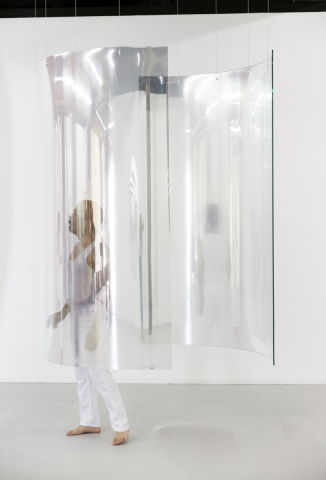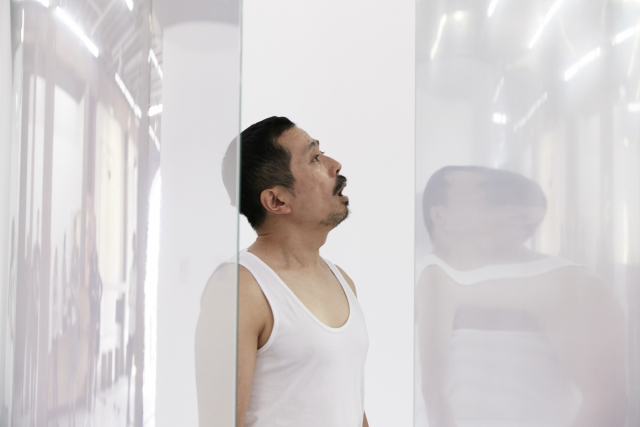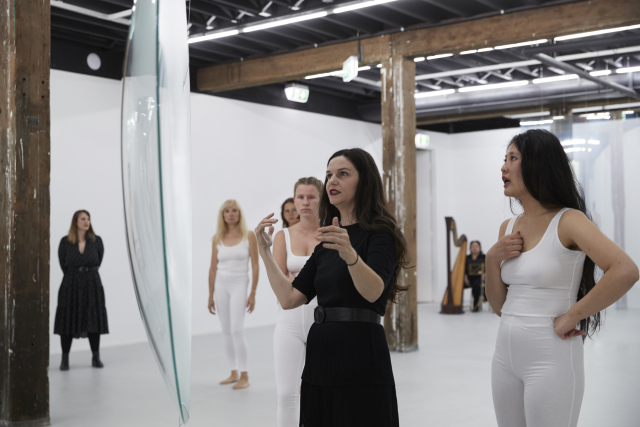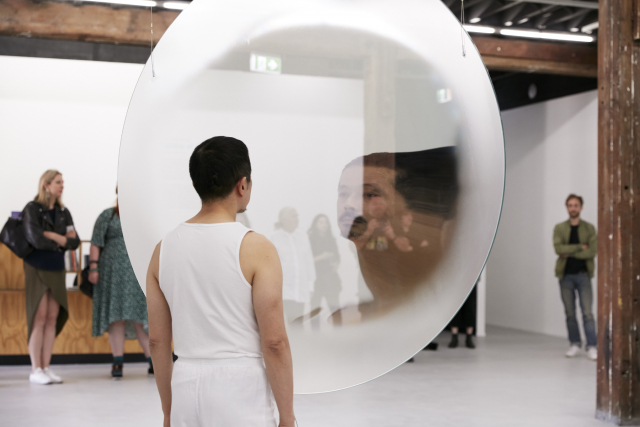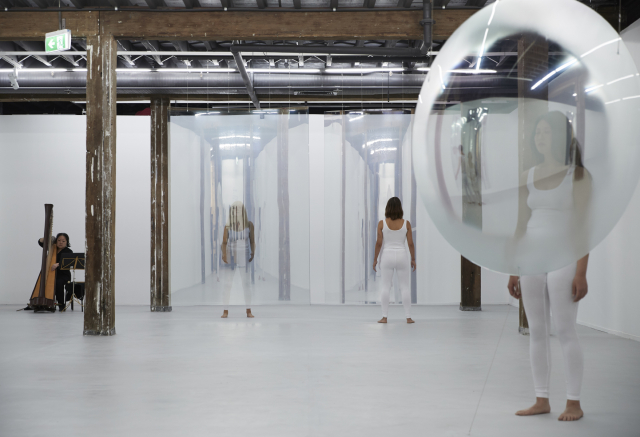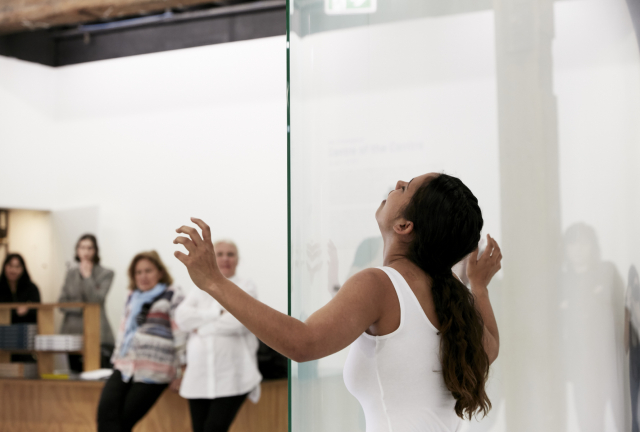Respire, Respire | Sculpture & Performance
This sculptural installation is made up of convex and concave sheets of glass, manipulated to push material boundaries. Alone, they are alluring in the way they capture light and allow prismatic colours to glint along their edges. The sheer size of the weighty material is juxtaposed by their suspended presentation and clear surface, which distorts anything it reflects. These glass sculptures are connected to the video artwork through the study of extremities, also relating back to the mineral O’Callaghan’s grandfather gifted her. There are researchers that are dedicated to studying the liquid trapped in mineral cavities, analysing and sequencing this potentially ancient fluid to find answers or clues to aid human existence. Similarly, the submersible Alvin is used to observe the lifeforms that cope with extreme environments, and scientists are studying these conditions to potentially extend and expand human limits. Thinking about such human capabilities, breath – a necessity for all organisms to live – became a point of connection for O’Callaghan. The word ‘respire’ means to inhale and exhale air to maintain life, and the glass sculptures that encompass Respire, Respire are activated through exaggerated breathing techniques that can incite feelings of joy, serenity, gratification or ecstasy.
Respire, Respire
2019
performance, dielectric glass sculptures
dimensions variable, 20 minutes
Respire, Respire includes sculptures and performances based on a choreography of breathing. These were drawn from the protocols for breathing developed in collaboration with Sabine Rittner, Associate Researcher and Music Psychotherapist, Institute for Medical Psychology, University Hospital Heidelberg, Germany. By breathing faster and deeper, performers gradually attain altered states of consciousness ranging from meditative, ecstatic and even to hallucinatory.
The glass sculptures act as ritualised objects and performance tools. Their shapes are inspired by the ‘extremophiles’ (organic life found at mid-ocean ridge hydrothermal vents) captured in the film Centre of the Centre (2019) and are translated into monumental, abstract forms. The glass is thermo-formed at temperatures similar to those found at the hydrothermal vent openings, provoking mutations in shape and colour. By looking to primordial structures to inform these sculptures, Mel O’Callaghan connects us all with the elemental drive to exist.
In the choreography that joins the performers and the sculptures, the artist accentuates the necessary human and non-human balance responsible for maintaining and regenerating life on Earth. The installation acts as a Gesamtkunstwerk (a total artwork): as the sound of breathing penetrates the space, the whole gallery pulsates.
This short clip is of the performance at UQ Art Museum, 2020 and is courtesy of the Artist and UQ Art Museum, Brisbane.
Developed in collaboration with Sabine Rittner, Associate Researcher, Institute of Medical Psychology at the University Hospital Heidelberg, Germany.
Courtesy the artist; Kronenberg Mais Wright, Sydney; Galerie Allen, Paris; and Galerie Belo-Galsterer, Lisbon
Mel O’Callaghan’s Centre of the Centre was curated and developed by Artspace and is touring nationally with Museums & Galleries of NSW. Centre of the Centre is co-commissioned by Le Confort Moderne, Poitiers; Artspace, Sydney; and The University of Queensland Art Museum, Brisbane. With Commissioning Partners Andrew Cameron AM & Cathy Cameron and Peter Wilson & James Emmett; and Lead Supporter, Kronenberg Mais Wright. The development and presentation of Centre of the Centre is supported by the Fondation des Artistes, Woods Hole Oceanographic Institution, and the US National Science Foundation. This project has been assisted by the Australian Government through the Australia Council for the Arts, its arts funding and advisory body.


